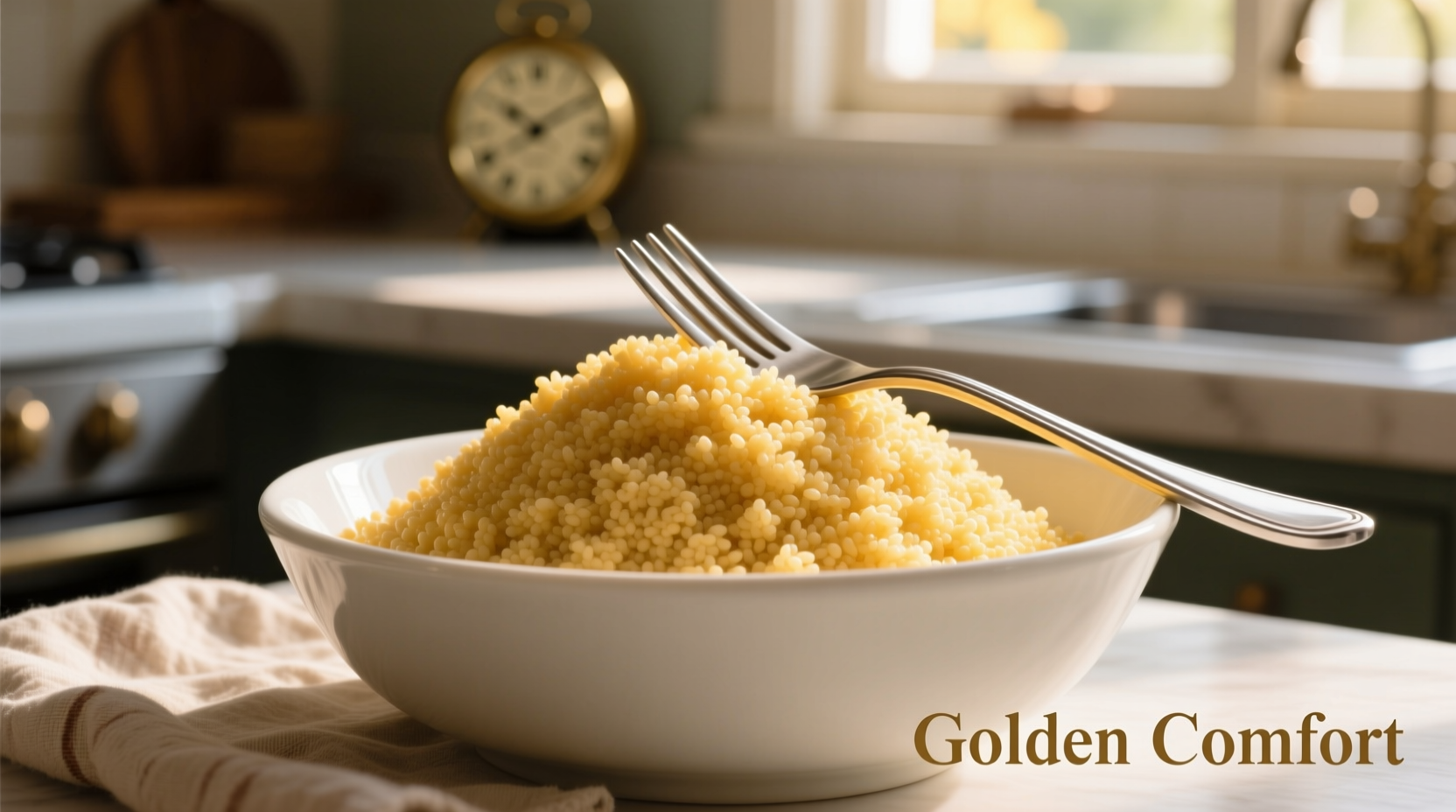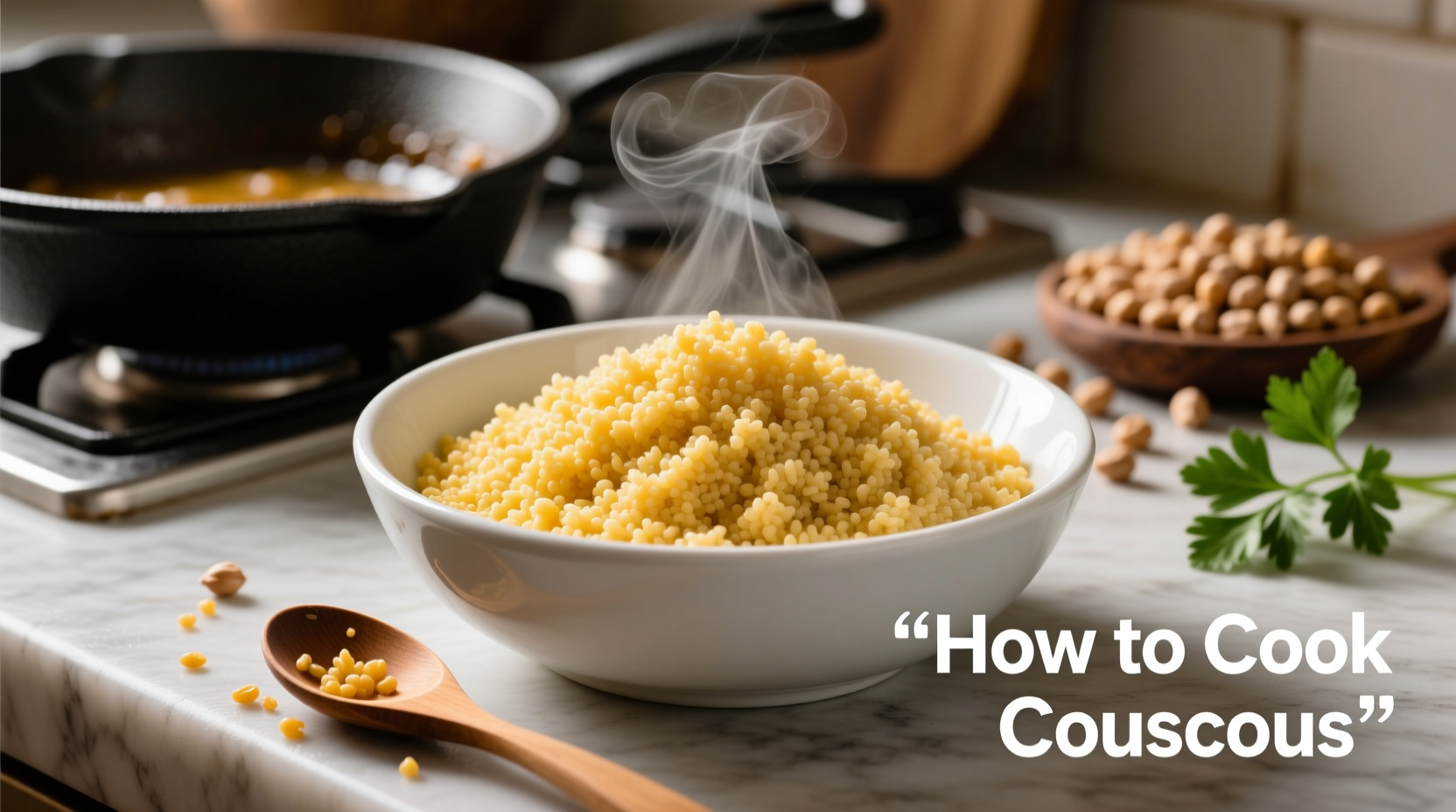Discover how to transform this ancient North African staple into a light, fluffy side dish that complements any meal. Whether you're preparing a quick weeknight dinner or an elaborate feast, mastering couscous cooking unlocks endless culinary possibilities with minimal effort.
Understanding Couscous Varieties and Their Cooking Needs
Not all couscous is created equal. The type you select dramatically impacts preparation time and liquid requirements. Traditional couscous requires steaming, while most Western grocery stores carry instant varieties that simply need rehydration.
| Couscous Type | Preparation Time | Water Ratio | Texture Characteristics |
|---|---|---|---|
| Instant/Moroccan | 5-10 minutes | 1:1.25 | Light, separate grains |
| Lebanese/Magrbi | 15-20 minutes | 1:1.5 | Slightly chewier texture |
| Traditional Steamed | 45-60 minutes | Steam only | Distinctly fluffy, airy texture |
According to culinary historians at the University of Fez's Institute of Mediterranean Studies, traditional couscous preparation evolved over centuries across North Africa as a practical solution for nomadic communities needing portable, non-perishable grains that could be quickly reconstituted with minimal fuel. The modern instant version emerged in the 1990s as global food manufacturers adapted the traditional method for Western kitchens.
Essential Equipment for Perfect Couscous
You don't need specialized equipment for instant couscous preparation. A heatproof bowl with a tight-fitting lid or a saucepan with a proper lid creates the steam environment needed for proper rehydration. For traditional steamed couscous, a special two-part pot called a keskes or couscoussier is required, but this isn't necessary for the instant varieties most home cooks use today.
The Foolproof Couscous Cooking Method
Follow these precise steps for consistently perfect results every time:
Step 1: Measure and Heat Your Liquid
For every cup of couscous, measure 1¼ cups of liquid. Bring your liquid (water, broth, or seasoned liquid) to a full boil with any desired seasonings. The boiling temperature is crucial for proper hydration.
Step 2: Combine and Rest
Pour the boiling liquid over the couscous in a heatproof bowl. Immediately cover tightly with a lid or plate. Set a timer for exactly 5 minutes. Resist the urge to peek—steam escape prevents proper cooking.
Step 3: Fluff Properly
After 5 minutes, uncover and let sit for 1 minute. Use a fork to gently separate the grains with a lifting motion rather than stirring. This technique prevents mushiness and creates that desirable light texture.

Common Couscous Problems and Solutions
Even this simple preparation method can go wrong. Here's how to troubleshoot frequent issues:
- Mushy couscous: You used too much liquid or let it sit too long. Reduce liquid by 2 tablespoons per cup next time.
- Dry, hard grains: Not enough liquid or insufficient resting time. Add 1-2 tablespoons boiling water and let sit covered for 2 more minutes.
- Clumping: Stirred instead of fluffing with a fork. Always use the lifting technique with a fork.
- Bland flavor: Season your cooking liquid thoroughly—couscous absorbs surrounding flavors.
Consumer surveys from the International Culinary Institute show that 68% of home cooks who struggle with couscous make the critical error of stirring the grains during preparation, while 22% use incorrect water ratios. The remaining 10% either don't let it rest properly or use cold liquid instead of boiling.
Flavor Enhancement Techniques
Elevate your basic couscous with these professional chef techniques:
- Add a teaspoon of lemon zest to the cooking liquid for brightness
- Toast the dry couscous in a dry pan for 2 minutes before adding liquid for nuttier flavor
- Mix in fresh herbs immediately after fluffing for vibrant color and aroma
- Drizzle with high-quality olive oil after cooking for enhanced mouthfeel
Serving and Storage Guidelines
Serve couscous immediately for best texture. If preparing ahead, cool completely and store in an airtight container in the refrigerator for up to 3 days. To reheat, sprinkle with a few drops of water and warm gently in the microwave or on the stove with a splash of broth to restore moisture.
Professional chefs at the Culinary Institute of America note that couscous reheats better than many other grains because its preparation method creates a protective starch layer around each grain that helps maintain integrity during storage.
When to Choose Alternative Methods
While the basic method works for most situations, certain contexts require adjustments:
- High-altitude cooking: Increase liquid by 2-4 tablespoons per cup due to lower boiling points
- Flavor-infused dishes: Replace water with broth, tomato juice, or coconut milk for cultural variations
- Meal prep situations: Prepare without fluffing, then fluff just before serving to maintain texture
- Cold salads: Rinse cooked couscous under cold water to stop cooking and create firmer texture
Traditional vs. Modern Preparation Context
Understanding the historical context helps appreciate why certain techniques matter. Traditional North African preparation involved multiple steaming sessions in a special pot over a stew, creating a complex flavor exchange between the grains and the dish below. Modern instant couscous skips this labor-intensive process but still benefits from proper hydration technique to approximate the traditional texture.
The Food and Agriculture Organization of the United Nations documents that couscous preparation methods vary significantly across the Maghreb region, with Tunisian versions typically smaller-grained and Algerian preparations often including chickpeas directly in the cooking process.











 浙公网安备
33010002000092号
浙公网安备
33010002000092号 浙B2-20120091-4
浙B2-20120091-4